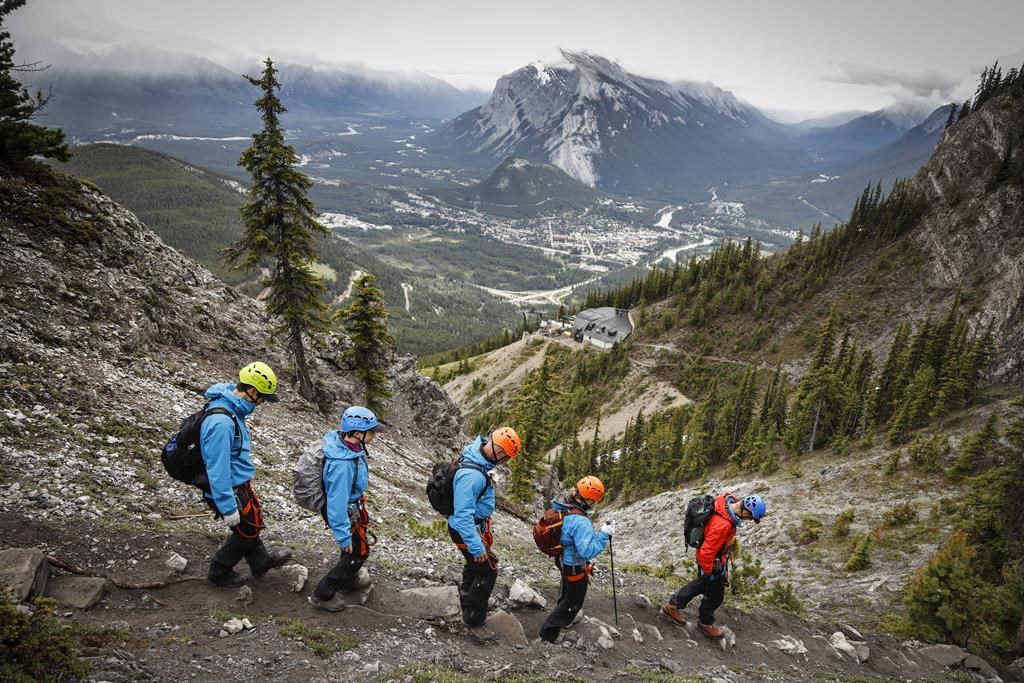Anyone looking for a late-May hike in Alberta’s mountain parks expecting dry snow-free conditions could be surprised to find there is still lots of the white stuff, along with continued risk of avalanche.

Alex Lawson, a member of Banff National Park’s visitor safety team, is warning of above normal amount of snow still present at higher elevations.
“I’ve been working with Banff (National Park) for six years and this time of the year – definitely the deepest I’ve seen it,” Lawson told Global News, saying it’s about 30 per cent deeper than typical.
“The main contributing factor has been that it’s been relatively cool for the last few months. We haven’t had any spikes in temperatures, we haven’t had any rain events and we’ve been getting consistent snow.”
That deep snowpack means the avalanche risk continues into late spring, and can even change day to day.
“The temperatures are the real regulator of what the avalanche danger is at the time,” Lawson said. “So if it’s cold at night, typically there’s not much avalanche hazard – it gets reduced quite a bit. And then as it warms up in the day and if it’s really sunny, things increase.”

The visitor safety team member is advising hikers to choose lower-elevation paths like those near the Banff townsite until more of the snowpack melts, and to avoid higher-elevation trails, especially around Lake Louise.
“So picking areas like Johnson Canyon or Tunnel Mountain to go hiking are your better options than going into Lake Louise, where many of the classic hikes in the Lake Louise area, like the Plain of Six Glaciers or Lake Agnes, are threatened by significant avalanche danger,” Lawson said.
“And without having the knowledge to make good decisions in the backcountry and being well equipped with avalanche safety equipment, I would recommend to stay out of avalanche terrain as much as possible.”
He also advises checking trail conditions before heading out on a trek.
Lake Moraine Road’s reopening has been delayed until the lingering avalanche risk subsides and plows can get through. While the first eight kilometres are suitable, Parks Canada is advising cyclists remain alert for passing snowplows and look out for frost heaves and icy patches.
“Once we’re happy with the avalanche conditions for that area, we will go ahead and open it.”
- Ontario takes action against chemical plant after Aamjiwnaang First Nation residents fell ill
- High benzene levels detected near Ontario First Nation for weeks, residents report sickness
- Enter at your own risk: New home security camera aims paintballs at intruders
- Beijing orders Apple to pull WhatsApp, Threads from its China app store




Comments